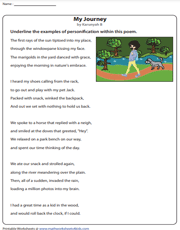
In line 7, “And every fair from fair declines,” Shakespeare uses alliteration, as each sound occurs at the beginning of each word, making the rhythm smooth. These last lines reflect the author’s purpose of making his lover’s beauty eternal by capturing it in the poem. Lines 13 and 14 embody the author’s main idea and act as a closure of the whole verse in general. The last couplet is a conclusion of each of the themes presented in the quatrain. In the sonnet, Shakespeare uses a specific rhyme scheme, which goes ABAB CDCD EFEF GG, as there are four-line quatrains and a concluding two-line couplet.Įach of the four-line quatrains has a particular theme and tone, while the two-line couplet has an entirely different sound and has a change in the topic. Additionally, it mimics a breathing pattern, thus establishing a calm beat, making it easier for the reader to recite the poem. 18, it dictates the way that the poem should be read and helps create a constant melodious rhythm. Shakespeare uses the iambic pentameter in other sonnets too, thus, in a way, making it a feature of English classical poetry. The type of metric line used in verse is iambic pentameter, which means that every line has ten syllables in it, consisting of five iambs. Descriptions of nature using these literary devices provoke a certain mood for the verse and help the reader imagine the atmosphere more vividly. Moreover, it is important to note that Shakespeare skillfully uses metaphor and personification to set up imagery for the reader. The word “shade” is a metaphor for the afterlife, which means that the poem, as long as people will recite it, will carry the image of his lover and immortalize it. “Nor shall death brag thou wander’ st in his shade” (line 11) is a line, where Shakespeare inputs a personification of death, claiming that death will never claim his lover. Nevertheless, the author attributes this organ to “heaven,” exaggerating the description of the sun. The literary device is used here to highlight the shortness of the summer season by comparing the summer period to a lease.īeing previously analyzed, the phrase contained in the fifth line, “the eye of heaven,” could also include personification, as an eye is an organ that can only be found in living things. Here, summer acts as if it is renting a property, while the weather is the property itself. By this, he means that summer takes out a lease with nature, which has a defined expiration date that is too short for his case. He argues that the summer season is too short, unlike his lover, who will live forever with the power of his poetry.įor instance, Shakespeare writes: “And summer’s lease hath all too short a date” in the fourth line. 18, the author attempts to attribute these properties to nature, and at the same time, distinguish it from his lover’s beauty. Quite often, Shakespeare uses personification in the depiction of nature, which is endowed with certain human features. Personification is a type of metaphor, which transfers the properties and characteristics of animate objects to inanimate ones. In the final couplet, Shakespeare emphasizes the fact that as long as people read his poem, his lover is still considered to be “alive.” Therefore, Shakespeare’s lover has been metaphorically immortalized forever within the lines of his sonnet, despite all the “rough winds” and “sun being dimmed.” Shakespeare’s metaphors reflect both the stylistic achievements of his era and his creative personality. By that, the author manages to “engrave” his lover into the words in the verse, therefore making his lover immortal.

“When in eternal lines to time thou grow’ st” (line 12) is a line where “eternal lines” is a metaphor for poetry.

This line could also be viewed as a personification of inanimate things, as the word “darling” is usually applied to humans.

“Darling buds” symbolizes beauty and love, and in the line, Shakespeare states that love and grace are not everlasting phenomena. For instance, “Rough winds do shake the darling buds of May” (line 3) is the line where Shakespeare uses metaphor and symbolism to convey his idea of beauty. In the 18th sonnet, Shakespeare uses metaphor to effectively develop a vivid and memorable image in the reader’s mind and convey a particular idea.


 0 kommentar(er)
0 kommentar(er)
